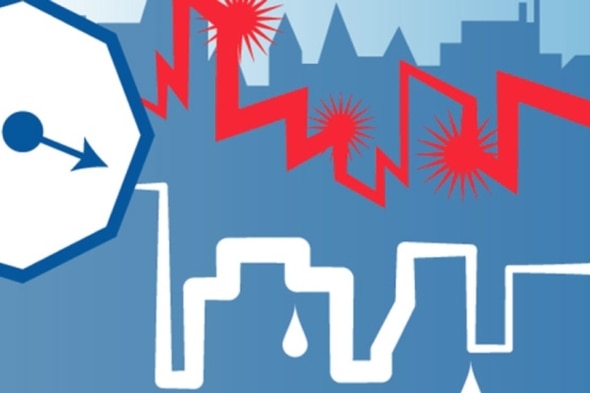Sustainable Design of Communities
Daniel M. Kammen
June 26, 2017
Moving beyond a focus on solar roofs for single-family homes, ambitious projects are attempting to join blocks of buildings into sustainable units
In the past decade, the construction and retrofitting of individual homes to reduce energy and water use has grown explosively. Yet applying green construction to multiple buildings at once may be an even better idea. Sharing resources and infrastructure could reduce waste, and retrofitting impoverished or moderate-income neighborhoods could also bring cost savings and modern technology to people who would normally lack such opportunities. Working at the neighborhood level does add complexity to planning, but these neighborhood efforts offer rewards that even green single-family homes cannot offer.
One powerful example is the Oakland EcoBlock project, which I lead at the University of California, Berkeley, with my colleague Harrison Fraker, a professor of architecture and urban design. It is a multidisciplinary endeavor involving urban designers, engineers, social scientists and policy experts from city, state and federal governments, academia, private industry, nonprofits and grassroots organizations.
The program, which has been planned in great detail but has not yet begun construction, will retrofit 30 to 40 contiguous old homes in a lower- to middle-income neighborhood near California’s famous Golden Gate Bridge. It aims to apply existing technology to dramatically reduce fossil fuel and water consumption and greenhouse gas emissions. We expect to rapidly recoup the money spent on infrastructure with savings from operating expenses while at the same time ensuring residents’ long-term comfort and security.
On the energy front, we will install solar panels on buildings throughout the community, sending the energy to a smart microgrid; excess solar energy will be stored via flywheels housed in a shared building. The community will also share electric cars, which will have access to more than two dozen local charging stations. These measures should reduce annual electricity consumption by more than half and bring carbon emissions to zero—a valuable feat, considering that more than a quarter of U.S. greenhouse gas emissions emanate from residences.
The Environmental Protection Agency estimates that as much as 50 percent of California’s home water consumption goes to lawns and gardens. Our estimates suggest that the EcoBlock’s system-level redesign will cut demand for potable water by up to 70 percent. We will treat and reuse wastewater from toilets, as well as gray water sent down drains and released by washing machines. The recycled fluid will go to gardening and irrigation. We will collect rainwater and deliver it to toilets and washers, and we will install efficient fixtures and taps. Treated solid wastes, meanwhile, will be incorporated into compost.
Beyond serving as a model for sustainability, the Oakland EcoBlock project will provide local construction jobs and revitalize a community. If it is as successful as we expect, it will serve as a model to be replicated elsewhere in the U.S. and beyond. To date we have received inquiries from Europe, North Africa and Asia, confirming widespread interest in targeting and redesigning communities, not just individual homes.
Daniel Kammen is a professor in the Energy and Resources Group, and in the Goldman School of Public Policy, and in the Department of Nuclear Engineering at the University of California, Berkeley, where he also directs the Renewable and Appropriate Energy Laboratory (RAEL: http://rael.berkeley.edu).
Twitter: @dan_kammen

You must be logged in to post a comment.